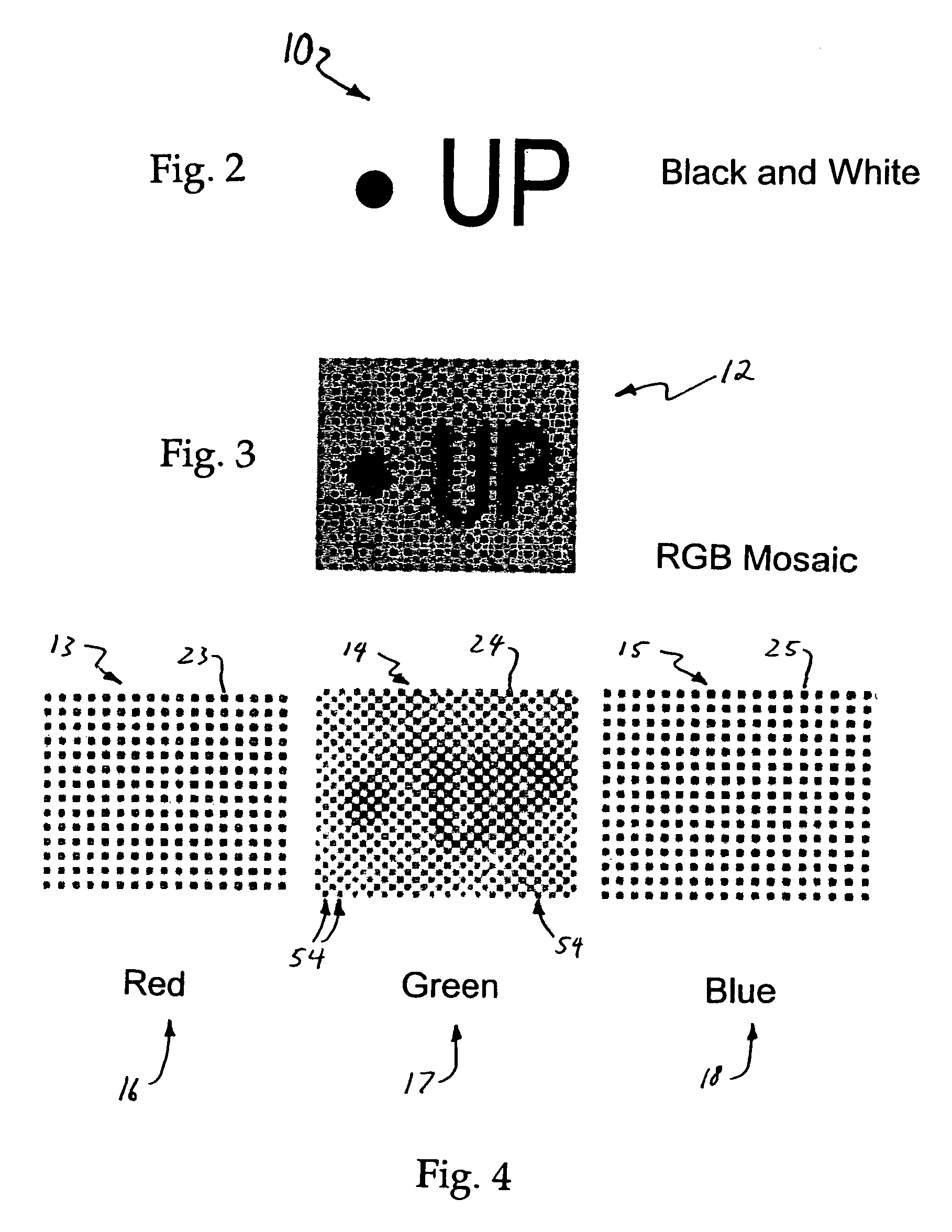Image mosaic data reconstruction
a mosaic data and image technology, applied in the field of image mosaic data reconstruction, can solve the problems of not reducing the colour aliasing that may have been present in the original, unable to achieve the desired maximum achievable resolution, and fine details in an image may give artificially strong or weak responses, etc., to achieve the effect of simplifying the computation task and being inexpensively implemented in hardwar
- Summary
- Abstract
- Description
- Claims
- Application Information
AI Technical Summary
Benefits of technology
Problems solved by technology
Method used
Image
Examples
Embodiment Construction
[0054]FIG. 1 shows one example of a consumer imaging device, here a hand-held digital camera 1. Such cameras have a colour image sensor 2 having a two-dimensional regular array of imaging elements or pixels 4. A typical consumer sensor array may have up to 4 Megapixels resolution, arranged in a rectangular array 2500 pixels wide and 1600 pixels high.
[0055]The imaging elements are sensitive to light across a wide spectrum of colours, and so the sensor array 2 is overlain by a mosaic-like pattern of colour filters 6. There are usually only three such colours, red (R), green (G) and blue (B), (RGB) and the colours are usually interleaved in a repeating pattern across the sensor array 2. Thus, the array elements 4 under each colour of filter 6 are sensitive only to light with wavelengths passed by each corresponding filter 6.
[0056]Many filter patterns exist, but the most common is the Bayer filter pattern. This consists of pixels with colour filters arranged in a rectangular grid patter...
PUM
 Login to View More
Login to View More Abstract
Description
Claims
Application Information
 Login to View More
Login to View More - R&D
- Intellectual Property
- Life Sciences
- Materials
- Tech Scout
- Unparalleled Data Quality
- Higher Quality Content
- 60% Fewer Hallucinations
Browse by: Latest US Patents, China's latest patents, Technical Efficacy Thesaurus, Application Domain, Technology Topic, Popular Technical Reports.
© 2025 PatSnap. All rights reserved.Legal|Privacy policy|Modern Slavery Act Transparency Statement|Sitemap|About US| Contact US: help@patsnap.com



